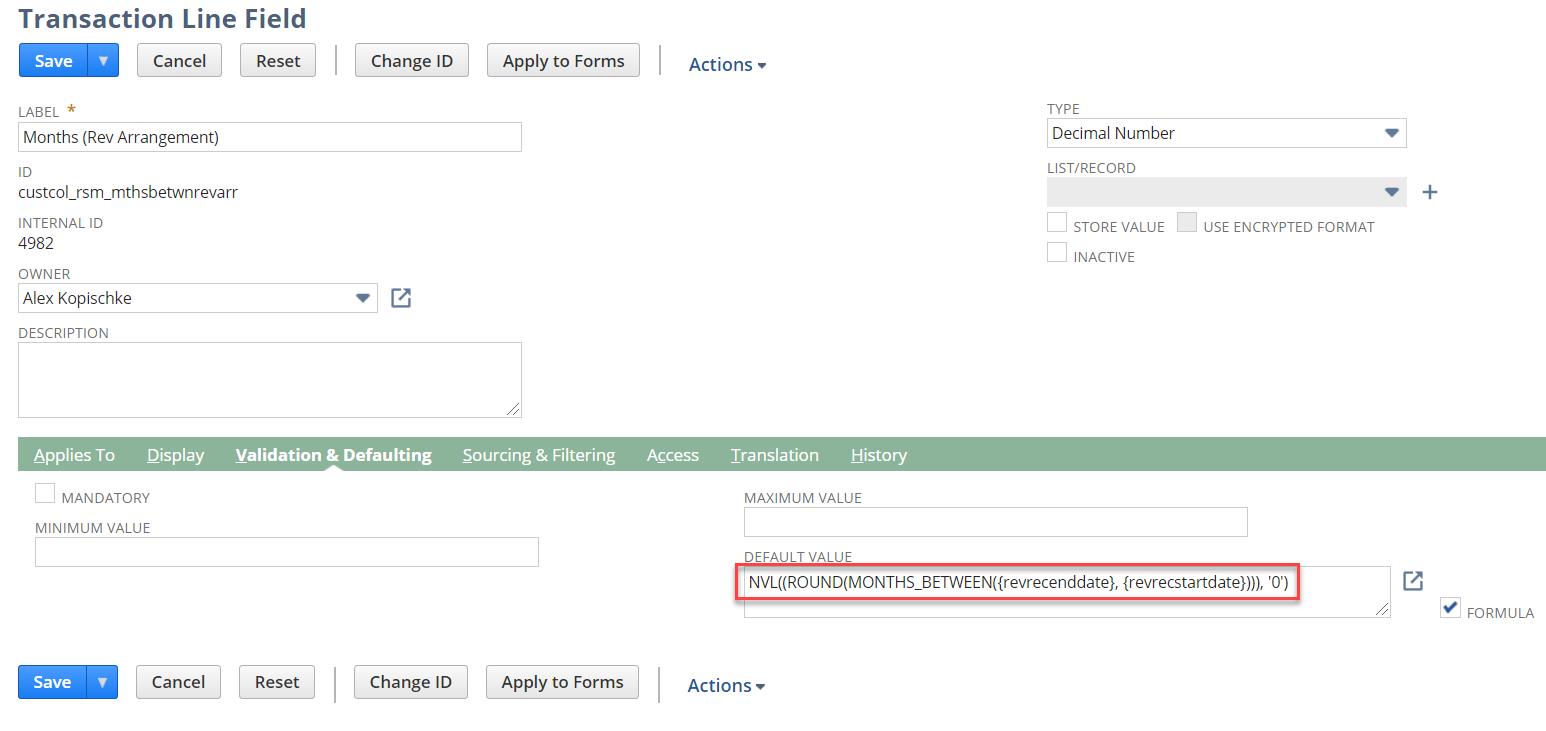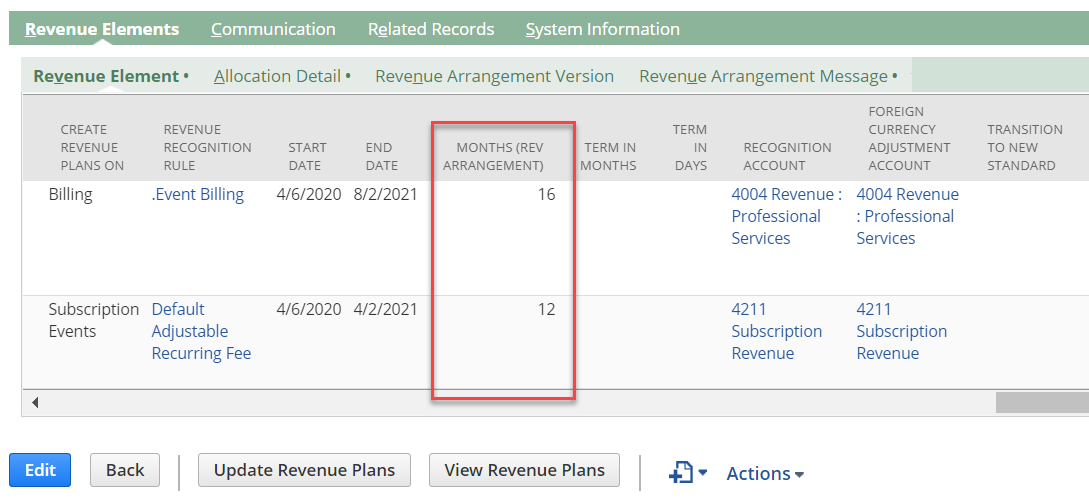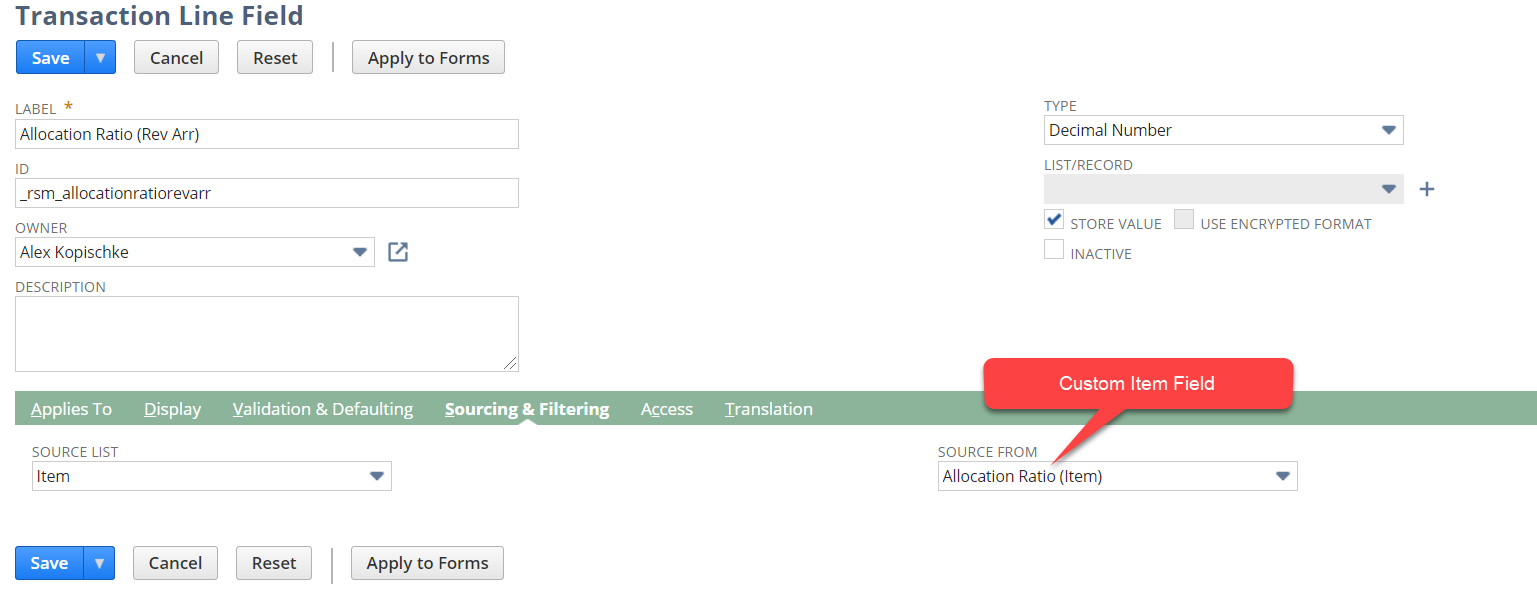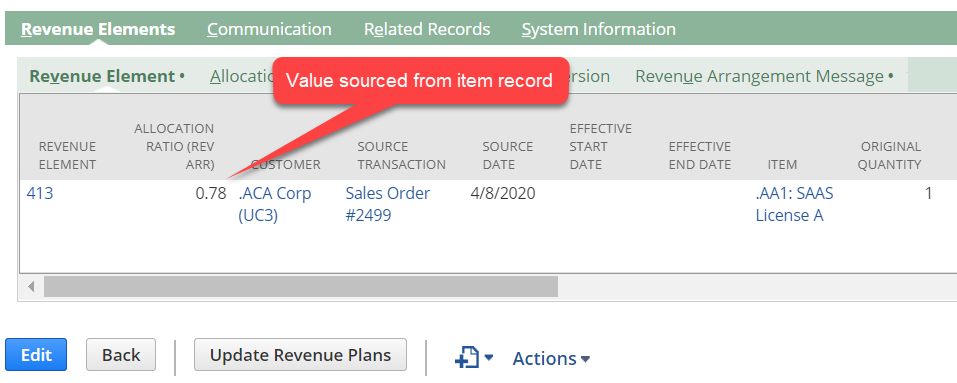NetSuite’s Advanced Revenue Management (ARM) module provides users that have more complex revenue recognition capabilities with the ability to allocate revenue between elements in a sales contract, as required by ASC 606. The revenue allocation is calculated by the elements fair value which is defined by a fair value formula. Utilizing the fair value formula allows for simple calculations such as Discounted Sales Price * Quantity, to more complex scenarios. See below for examples on better utilizing fair value formulas and reducing the need for manual adjustments to revenue recognition processes.
Non-stored value custom line fields can be used in fair value formula calculations
Non-stored custom line fields can be used in fair value formulas. A use case for this example is using the number of months between rev rec start date and rev rec end date in the fair value formula.

Utilizing the internal ID of this field in your fair value formula provides the ability to use your calculated field value in the fair value calculation.

Set a value on an item record and source directly to the revenue arrangement
Utilizing a custom item field on the item record can be sourced on to the line level of a custom line field on the revenue arrangement and used in a fair value formula.

We found use for this functionality recently for kit item components. The component items had a set amount of the discounted sales to be allocated, and we stored and managed this percentage directly on the item record.

Use reference ID with your GroupSum formulas and revenue allocation groups
For an overview of revenue allocation groups see this article. To take the content of that article one step further, it is possible to source a value into the Reference ID field to avoid all elements of the same of the Revenue Allocation Group being summed up. If this value is set on the source transaction, you can use Revenue Field Mapping to source the Reference ID onto the Revenue Arrangement. Once sourced onto the revenue arrangement the GroupSum will only sum the elements with the same Reference ID and Revenue Allocation Group.

Note that in the GroupSum formula there is no part of the expression to note the Reference ID. NetSuite makes this distinction when running the GroupSum so it will not have to be done explicitly when creating your Fair Value Formula.
Takeaways
The goal of the ARM module is to reduce manual effort and keep revenue recognition processes in NetSuite and out of Excel. Using the above tips to assist in extending the functionality of Fair Value Formulas will contribute to this goal.
For more information on this topic or others related to NetSuite, contact RSM at netsuite@rsmus.com or by phone at 855.437.7202.

 RSMUS.com
RSMUS.com